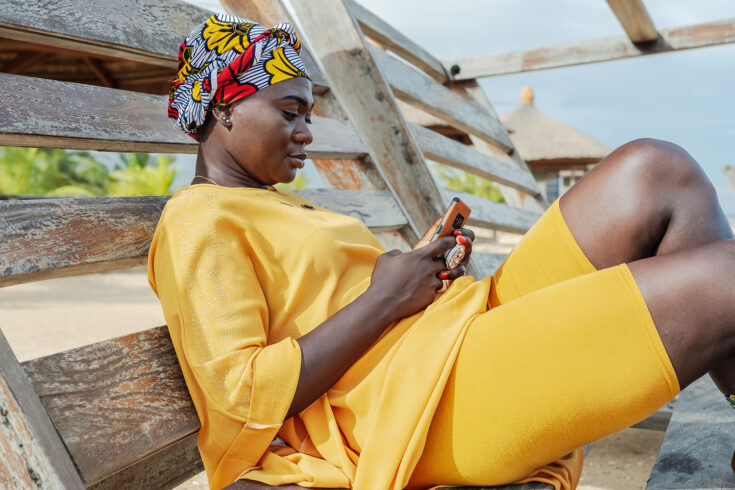Deaths due to pregnancy and childbirth-related complications in Ghana are high. The most recent estimates suggest 310 maternal deaths per 100,000 live births and 22 new born deaths per 1000 live births.
Providing easily accessible skilled birthing services is considered one of the most effective ways of achieving the UN Sustainable Development Goal of reducing maternal and neonatal mortality rates to 70 per 100,000 live births and 12 per 1000 live births respectively by 2030.
Mr Winfred Dotse-Gborgbortsi’s research has shaped priority-setting and decision-making by Ghana Health Services (GHS) to improve the distribution and quality of its services with the aim of reducing maternal and neonatal mortality. He also provided new methods for using routinely collected health and survey data to reduce maternal and neonatal mortality in developing countries worldwide.
Credit: Economic and Social Research Council
On-screen captions and an autogenerated transcript are available on YouTube.
About the research
Research by the Economic and Social Research Council (ESRC)-funded doctoral student Mr Winfred Dotse-Gborgbortsi investigated how travel time to health facilities and the standard of obstetric services on offer affect women’s access to high quality maternal healthcare in Ghana.
His study, which included spatial analysis integrating health facility databases with routine health data for over 40,000 women in 152 health facilities in the 33 districts of Eastern Ghana, identified inequalities in the provision of high skilled obstetric care.
In this region, 95% of needed obstetricians’ and gynaecologists’ hours were unmet.
Mr Dotse-Gborgbortsi says:
My use of disaggregated data highlights the danger of national estimates which can mask regional and district shortages of the most skilled healthcare staff.
Impacts of the project
Mr Dotse-Gborgbortsi’s work has helped tackle geographical inequalities in birth services in Ghana and internationally.
Interventions tackle variable birth services quality
The variation in maternal care quality, combined with travel difficulties, prompts many women to bypass local facilities in search of better care. For example, more than half of approximately 6,000 annual births at the Nsawam Hospital in Ghana’s eastern region are to women who have travelled from the neighbouring Greater Accra region.
Crucially, Mr Dotse-Gborgbortsi’s research supports effective local interventions by pinpointing the fine, location-specific detail which is lost in national averages of indicators and health outcomes.
GHS has used his analysis of key data to raise the standards of Eastern Ghana’s 152 health facilities based on interventions ranging from increasing the supply of skilled obstetricians to redistribution of midwives. His analysis of key data included:
- human resource capacity
- medicines
- non-medical supplies
- amenities and infrastructure
- staff morale
- water
- sanitation and hygiene combined with travel distance information
The GHS tailored interventions include:
- increasing the supply of skilled obstetricians and redistributing midwives
- enhancing referral services
- improving sanitation, water and hygiene
- ensuring the supply of key medications
Dr Anthony Ofosu, Deputy Director General of the GHS says:
Mr Dotse-Gborgbortsi’s field-based research has enabled the GHS to know the exact circumstances of specific populations and health facilities which enables us to tailor our improvement initiatives to their particular needs.
Increasing healthcare data expertise on the ground
Mr Dotse-Gborgbortsi has increased the capacity of GHS to learn from key healthcare data by facilitating nationwide online health information management training delivered to 1,320 public health officers in Ghana. He also provided face-to-face training for 10 district health managers on the use of information technology to collect and analyse routine health data.
During COVID-19, he built, trained and supported a collaborative network of 184 public health officers and early career West African researchers.
New data methods help tackle global maternal deaths
The United Nations Population Fund (UNFPA) has adopted approaches based on Mr Dotse-Gborgbortsi’s innovative modelling techniques to measure access and use of sexual and reproductive health services in low-income settings.
Working in collaboration with the UNFPA, similar methods for modelling inequalities are now being upscaled in 10 countries including:
- Burkina Faso
- Kenya
- Pakistan
Find out more
Mr Winfred Dotse-Gborgbortsi is a finalist in the ESRC Celebrating Impact Prize 2022.
See Winfred Dotse-Gborgbortsi’s website.
Read about Winfred Dotse-Gborgbortsi’s research interests.
Read the article on spatial inequalities in skilled attendance at birth in Ghana.

